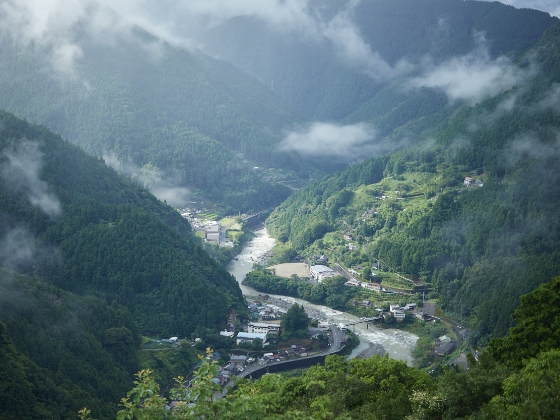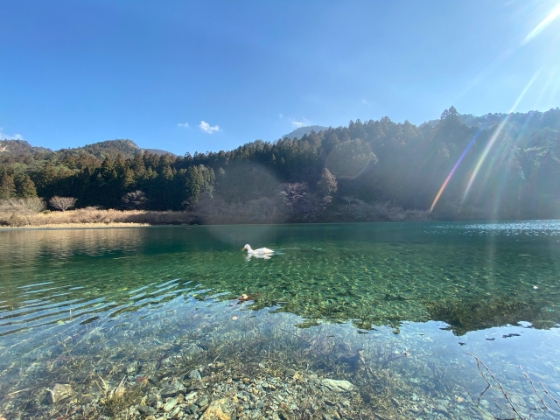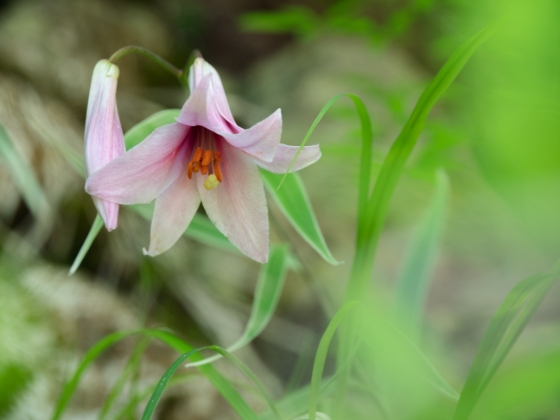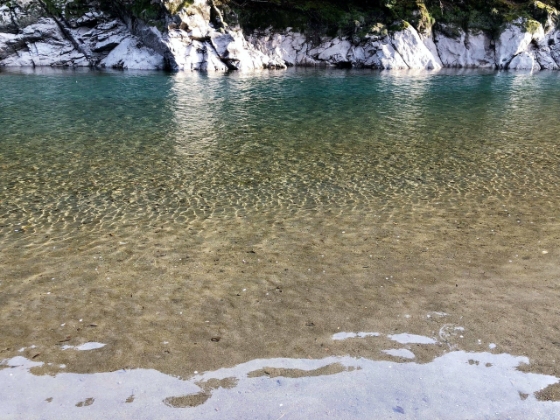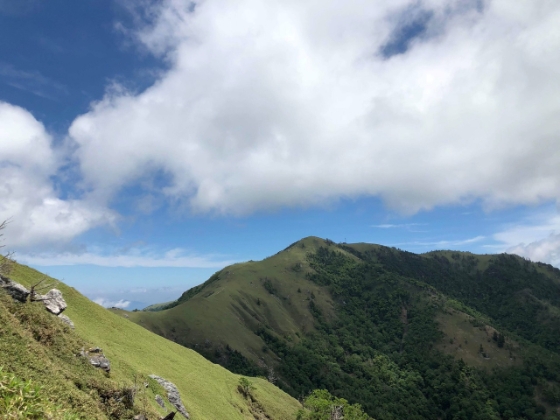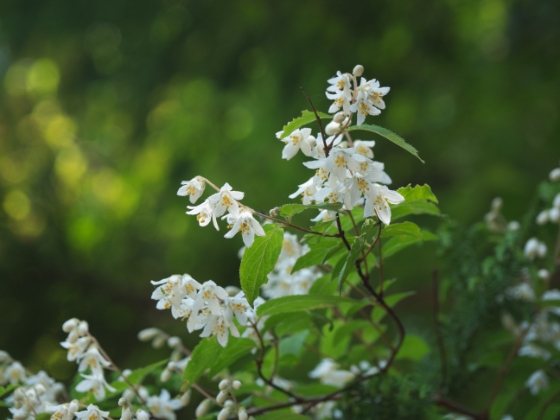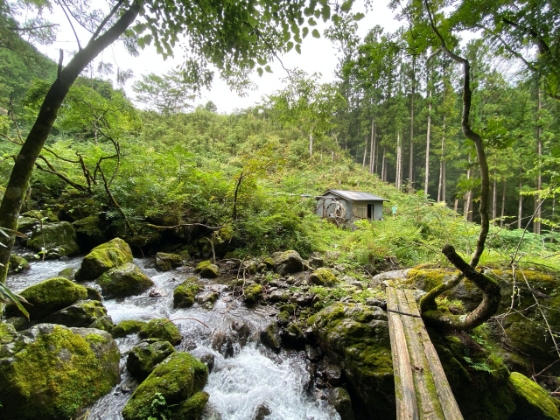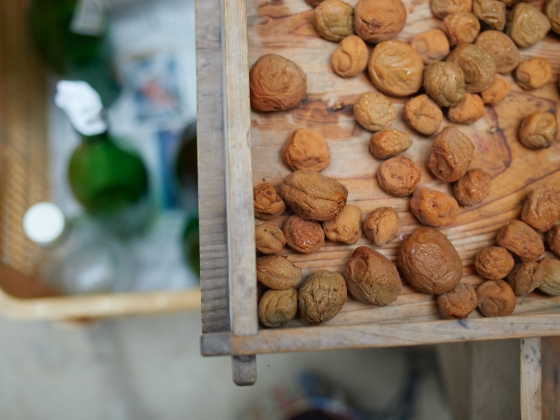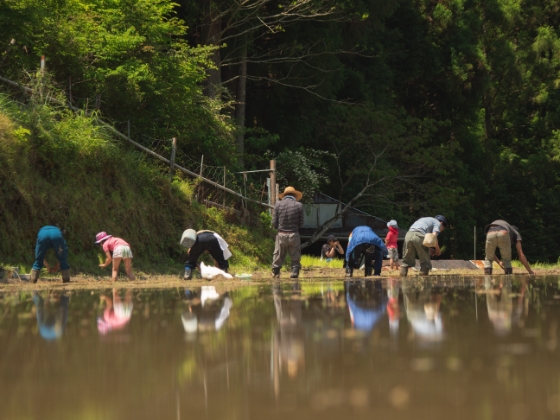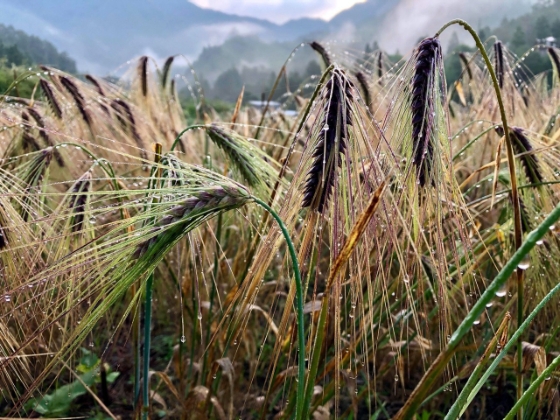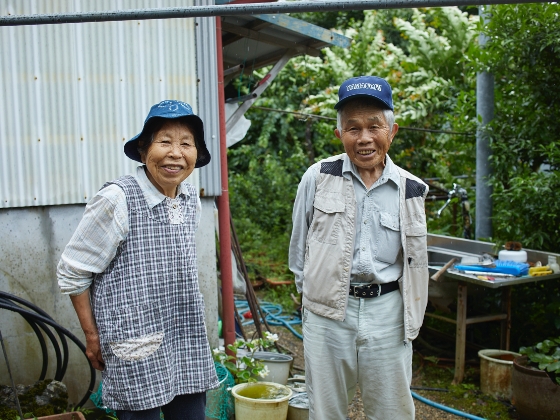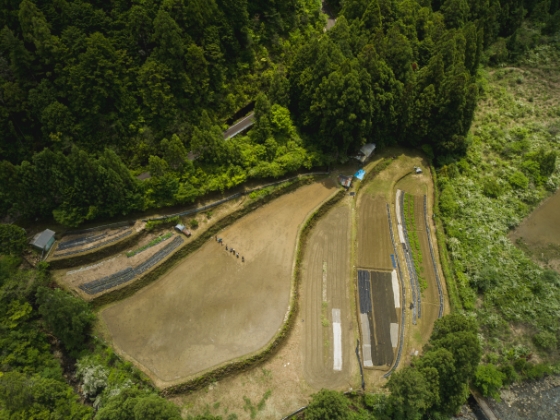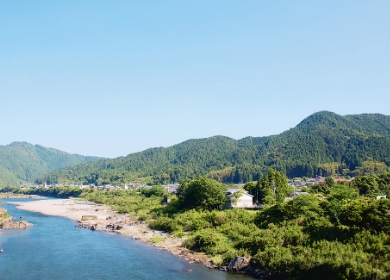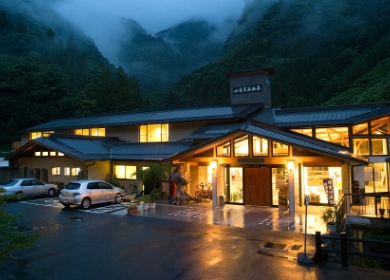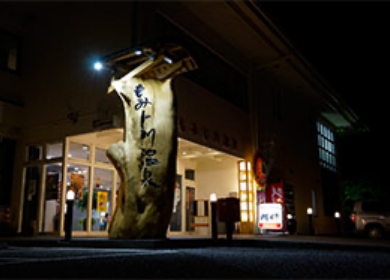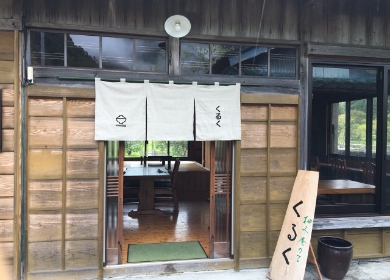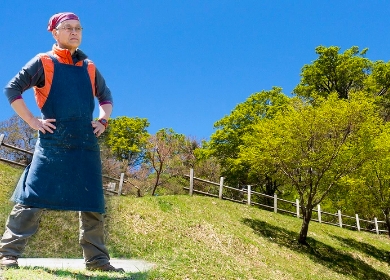TOWN
Naka town, located in Southern Tokushima Prefecture, formed when five adjacent towns merged in 2005. Over 90% of the town’s land (a whopping 994.86 square kilometers) is forest. Ranked thirteenth in local bodies in fear of disappearing, Naka town faces not only a severely decreasing population, but an aging one.
Nestled deep in the Mt. Tsurugi Quasi-national Park is the beautiful Konose Kyo valley and the famous Mt. Tsurugi Super Rindo forest roads. This vast expansion of nature is home to a multitude of wildlife. The emerald green waters of Naka River and Sakashukito Rivers offer majestic views including Ōgama Falls and the Ōtodoro Falls.
There are only two convenience stores in all of Naka town. Expanding widely to the East and West, the town contains various dietary cultures as well as multiple dialects and temperaments amongst its five conjoined towns and villages of Wajiki, Aioi, Kaminaka, Kito, and Kisawa.
SATOYAMA
Yonroppa sits in the former village of Kisawa, an approx. two-hour drive from Tokushima City, or a one-hour drive from the other closest town of Wajiki. With many remote villages landlocked in the steep mountains, it was only until after WWII ended that roads were finally built, speaking greatly for how autonomous the area and its people had been for ages. In addition to its signature potatoes and vegetables, this luxurious land offers an endless cycle of seasonal produce, from edible mountain vegetation like sprouts and baby bamboo shoot, to soy, adzuki, and takakibi corn that have been handed down for generations, as well as other beans and oats, like Chikomochi, a fragrant strand of sticky rice that only grows in this tiny corner of the world.


